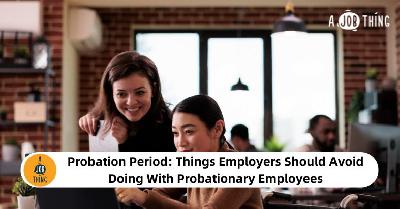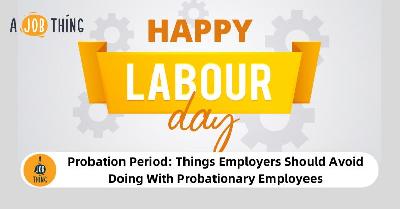
Goldman Sachs Toxic Culture of Secrecy to Blame for 1MDB, Says Ex-Banker
Create Job Description Using AI
Write appealing job descriptions for any job opening to attract the most qualifield and suitable candidates. FOR FREE.
try now
Company culture is the life of an organisation. It’s the stamp of identity that keeps the wheels turning. Values, traditions, customs and the strength of the company’s social network form the core of company culture. But what happens when company culture, which is supposed to be a strength, ends up sabotaging your business?
Toxic Culture of Conspiracy and Concealment
Tim Leissner, a former top Goldman Sachs Group Inc. banker in Asia says the company’s culture of secrecy at the investment bank led him to conceal wrongdoing from the company’s compliance staff. Leissner was involved in the theft of billions of dollars from 1Malaysia Development Bhd. (1MDB). He told a judge at his guilty plea that he plotted with others at the firm to pay bribes and concealed the scheme in line with the “culture of Goldman Sachs to conceal facts from certain compliance and legal employees.” Aside from Leissner, Jho Low and anothe Goldman banker Roger Ng were also charged.
Goldman has said it was led to believe that proceeds of debt sales it underwrote were for development projects, and that Leissner withheld information from the firm.
Low was closely involved in helping Goldman Sachs win the Malaysian business even as Leissner and at least one other lower-ranking banker were already working to shield his role from its compliance group, which had consistently said the bank shouldn’t take him on as a client. Although Goldman Sachs went on to raise as much as $6.5 billion for 1MDB in subsequent years, receiving about $600 million in fees, they are now facing the sharpest drop in shares in 7 years as Malaysia seeks refunds from the deal.
Goldman Sachs' case shows how company culture can go wrong. A company that’s notorious for treating workers poorly and creating a toxic work environment attracts people who display similar characteristics. Attractive salaries will only attract employees for a short time. Working in an terrible environment means that good employees won’t think twice about changing jobs.
How Do I Know if my Company Culture is Toxic?
As an employer, it's important to create a company with a healthy environment to ensure maximum productivity. But what happens when your employees find it difficult to work in your company? You gave them their dream job, but if your company culture is toxic it can be a nightmare not just for your employees, but also you.
Toxic work culture impacts your employees' mental health and theiy productivity. Therefore, it is important to identify traits of a toxic work culture before your office becomes a living hell.
Forbes Coaches Council listed five traits you can find in a toxic workplace:
1. It's All About Me, Me and Me.
This is called 'Silos Mentality'. It happens when your employees don't want to share information with their colleagues. They only care about their individual goals rather than the company's success. This mentality will lead to organisational dysfunction.
Solution: Team projects.
Most projects require input from multiple departments. Use this to your advantage by building project teams with representatives from each department. For instance, a team designing a major proposal could include someone from the sales department. Building inter-organisational teams promotes a culture that gets rid of silos mentality.
2. The Office Drama
Some organisations are full of Oscar-worthy actors. These cultures are full of grandstanding and hypersensitive employees in which they are stuck in an endless cycle of conflict management.
Solution: A healthier approach to conflict management.
Never ever ignore the workplace drama, it will only get worse. Whether you like conflic or not, you need to strengthen your skills in addressing it. There are many great books and workshops that can teach you to develop a strategy and learn how to effectively confront the drama. Your organisation's health depends on you.
3. Backstabbers Everywhere!
In any healthy work culture, you need trust. If your employee does not trust one another, they won't respect and collaborate with one another. So, better be aware if someone says "Don't tell anyone, but...". This mentality will pull your employeees into a poisonous conversation, and it won't be long until you become their target.
Solution: Stop the cycle of hatred.
Everyone is responsible for their own actions. As a leader, you need to set a boundary that says, "I will not be a part of any conversation intended to assassinate someone's character." This will effectively develop trust within your team. If your team know they can trust you, they will respect you and you will influence them.
4. Unstable Leadership
You should keep an eye on your leaders. If you find that they keep leaving and you keep having to replace them, you should either check your leader selection criteria or the office culture is blocking their path to success.
Solution: Ask all the tough questions.
The problem with many organisations is that they're doing the same thing over and over again and expecting different results. This is the approach that they always do when it comes to replacing key leaders.
If the leaders at the top aren't successful, you need to begin asking "why" and require the organisation to look inward. It's easier to blame to the leader, but the real problem is within the organisation.
5. Protecting the Status Quo
Far too many organisations focus on protecting the status quo. Organisations that fail to anticipate the future will probably miss it.
Solution: Look ahead, not behind.
Individuals or organisations are not defined by the past but how they shape the future. One of your most important roles as a leader is to create vision and lead forward.
This requires you to see what's ahead, and then lead your teams to make it a reality.
You can't get stuck in the successes and failures of the past. You need to move on.
Toxic work cultures lead to opressive, dysfunctional and hazardous working environments. As an employer, you need to be able to identify what's causing the toxicity in order to design effective solutions that promote organisational health. If health is not an option to your employees, then they only have one choice: quit.





